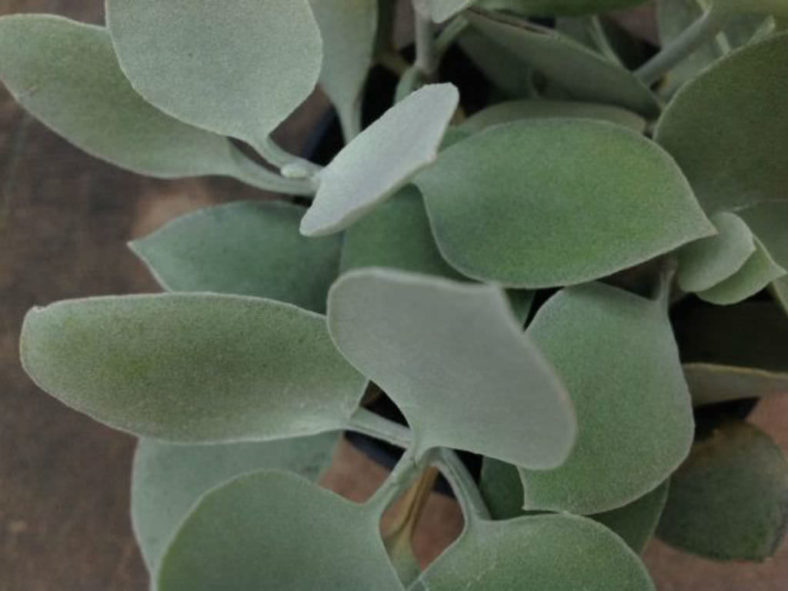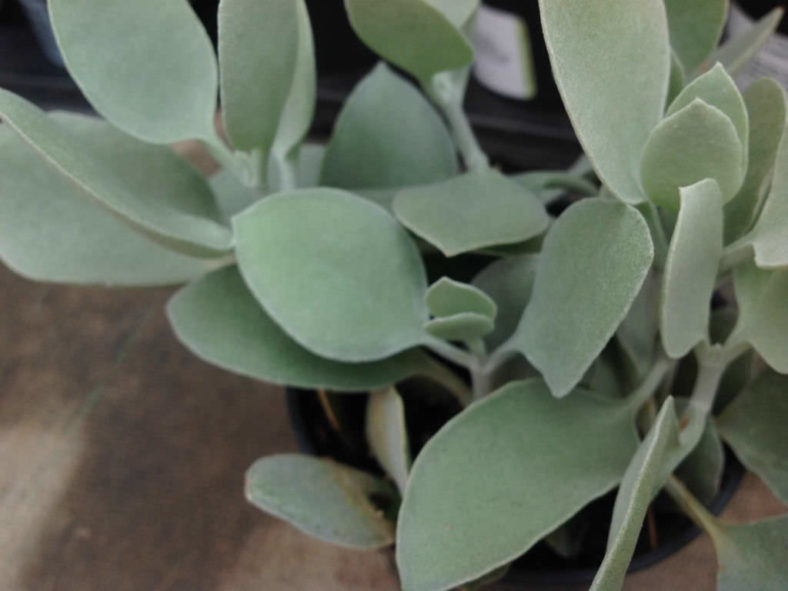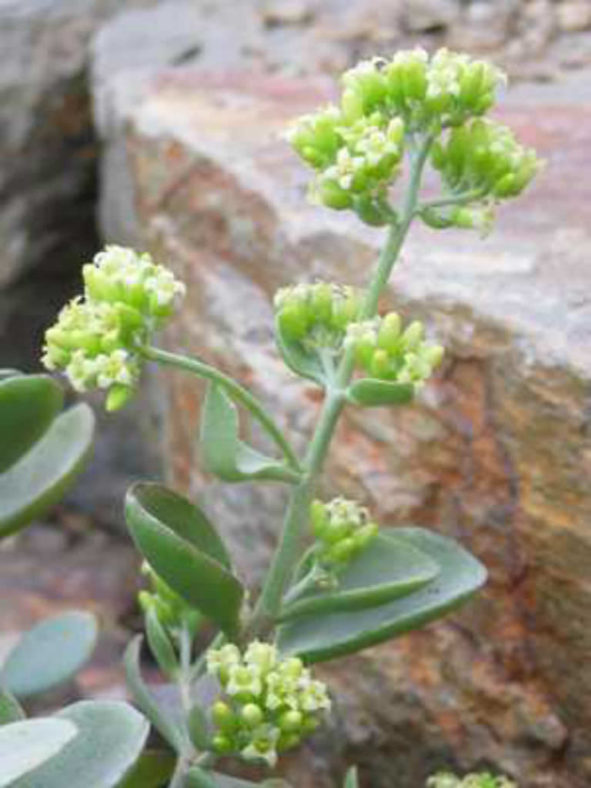Scientific Name
Kalanchoe hildebrandtii Baill.
Common Name(s)
Silver Teaspoons
Synonym(s)
Kalanchoe gomphophylla, Kalanchoe hildebrandtii var. glabra
Scientific Classification
Family: Crassulaceae
Subfamily: Sedoideae
Tribe: Kalanchoeae
Genus: Kalanchoe
Etymology
The specific epithet "hildebrandtii" (pronounced "hil-de-BRANDT-ee-eye") honors Johann Maria Hildebrandt (1847-1881), a German explorer, collector, and scientist.
Origin
Kalanchoe hildebrandtii is native to southern and southwestern Madagascar. It grows as a xerophytic shrub on various soils and rocks.
Description
Kalanchoe hildebrandtii is a shrubby succulent with woody, erect, highly branched stems that bear fleshy, glaucous to greenish leaves. It can grow up to 16.4 feet (5 m) tall. The stems and leaves are densely covered with minute, stellate hairs that are very appressed, giving the plant a glabrous appearance. The leaves are ovate to roundish, measuring up to 2 inches (5 cm) in length and 1.4 inches (3.5 cm) in width. They are attached to the stem by a cylindrical, grooved petiole that can grow up to 0.3 inches (0.8 cm) long.
The flowers are urn-shaped, white, with pale green to yellow hues, and appear in lax panicles in the summer.
Kalanchoe hildebrandtii is easily confused with Kalanchoe bracteata. They appear similar, have the same ecological requirements, and occasionally occur in mixed groups in Madagascar. Their flowers distinguish them. The white, pale green to yellow flowers of Kalanchoe hildebrandtii are not as attractive as the red ones of Kalanchoe bracteata.

How to Grow and Care for Kalanchoe hildebrandtii
Hardiness: USDA hardiness zones 10a to 11b: from 30°F (-1.1°C) to 50°F (10°C).
Kalanchoe care is minimal, but be cautious about light levels. Intense sunlight can burn the tips of the leaves, so place pots in partial sun to light shade areas when growing Kalanchoes.
The flowering varieties are highly rewarding for their colorful and long-lasting flowers. They prefer bright, sunny locations, especially in the growing season. Water moderately from fall to winter when the growth is most active. Reduce watering during the hottest summer months, when plants are mostly dormant, and during winter, when growth slows significantly. Let the soil surface dry out between waterings. Watch the fleshy leaves for signs of water distress. An ordinary potting soil mix is fine. Feed bi-weekly during the growing season with a liquid fertilizer, or use slow-release pellets.
These small plants require repotting every few years. When repotting, take extra care when handling, as the leaves are somewhat brittle and can snap easily. Clay pots work exceptionally well for planting Kalanchoes. Ensure pots can drain well and saucers can empty quickly.
Learn more at How to Grow and Care for Kalanchoe.
Links
- Back to genus Kalanchoe
- Succupedia: Browse succulents by Scientific Name, Common Name, Genus, Family, USDA Hardiness Zone, Origin, or cacti by Genus
Photo Gallery
Click on a photo to see a larger version.

